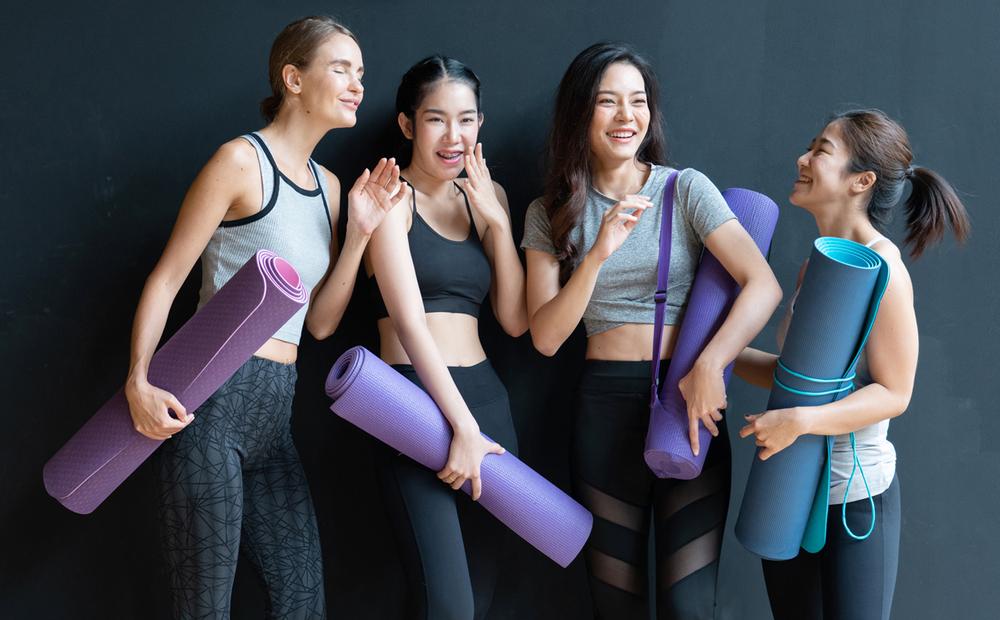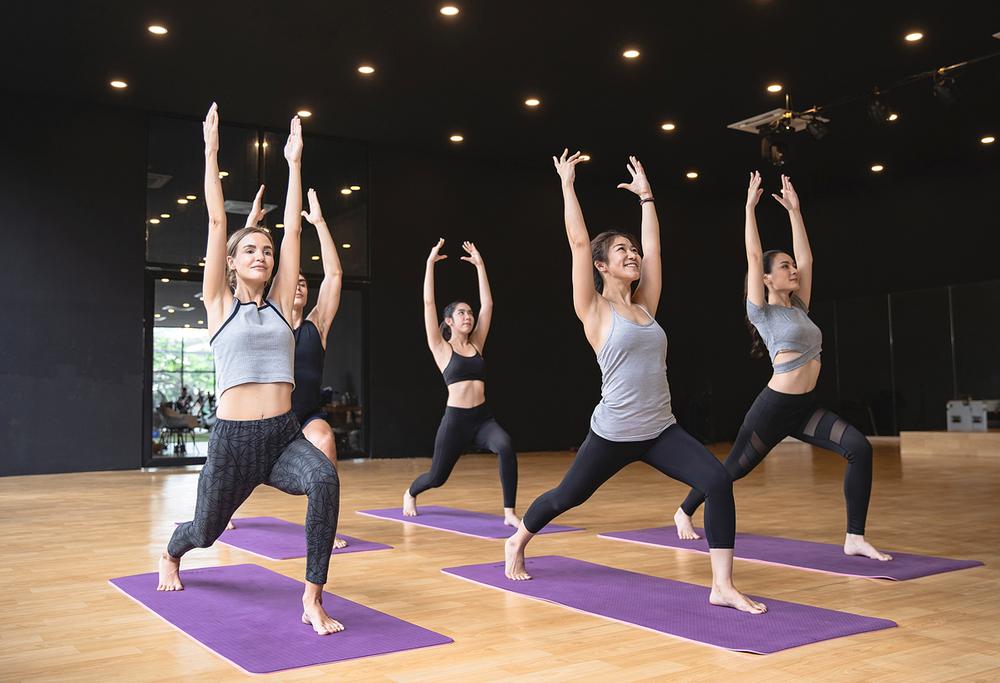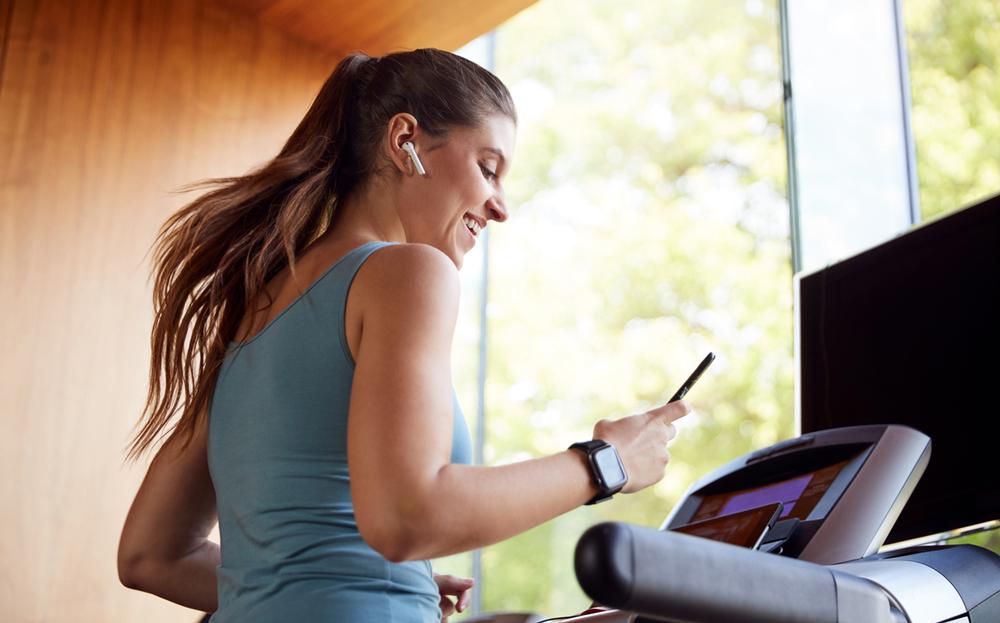What were the biggest lessons of 2020?
As any frisky start-up can attest, a forced accelerator will bring out the best and the worst. Some froze and closed. Others pivoted so hard it felt like a pirouette and revelled in a new world of limited resources with lashings of uncertainty.
New rules demanded a new playbook: we saw a new path to profit, a new clientele, new partners and new technology. Good studios retained their community: the relationship with members is still a massive advantage over Big Tech.
We’re watching a technology revolution in real-time. While it was already coming, 2020 was the tipping point. Depending on which tech-expert you subscribe to, the acceleration during this forced pause is somewhere in the magnitude of three to seven years, particularly in customer-facing efforts such as biometrics, gamification and more customisable software and CRM management.
There’s been a flurry of M&A activity, rollups, bankruptcies and partnerships: RSG and Gold’s, 1Rebel and Perks, Peloton and Precor and Beyonce, Box Union and Title Boxing Club, Equinox+ and Universal and Whoop and the who’s who of fitness trekking to the Middle East.
What did the industry do well?
We put our arms around our communities and hung on for dear life. We were transparent in our communication, Zoomed, social houred, binged, went online with schedules, trained remotely, educated, called people, entertained, took things outdoors, dropped or eliminated pricing to meet the market where it was.
There was triple digit growth of cycle, treadmill and rower sales. Bodyweight workouts lasted about a month in the US, boxers got sick of hitting air and lifting backpacks and pets got old pretty quick.
We took it outdoors – all reconnecting with the delight and mental health value of being outside, feet in the earth, hands in the sky. Nature has a funny way of balancing things out and ten hours of Zoom calls is enough to drive anyone outside.
How can we take these lessons forward?
Thanks to associations in most countries fighting the good fight, fitness is now inextricably linked to natural human function, mental health and productivity.
It’s a shame it took a pandemic to hurry this conversation. Our job is to meet the market where the market is and create intoxicating solutions to motivate the unmotivated, to address demographics other than the over-serviced millennial set. All touchpoints need to be re-examined: the brand, product and systems.
With skeleton staffing and seismic shifts in strategy, people have never been more important. Those still on the bus can’t just be salespeople, they must be growth salespeople. The marketers’ growth marketers. Expect channel shifts of top talent who come from adjacent industries who have accelerated businesses before.
Given that the delineation between work and home has evaporated, what will now be our second space? We know from extensive workplace surveying that our needs when we come together are not about actually doing work, but collaborating, team building, exercising, sharing, in-person interactions which can’t be done from home, entertaining and advancing the human creative condition.
What predictions do you have for the next year?
The future is phygital: marrying the best of online and offline elements to create a more satisfying customer experience. Think omni-channel, hybrid, ecosystem, digital, online/offline strategy – all indicators and disruptors of worlds colliding digitally and in real life. We can all become fitness nomads, carrying the brands we care about in our pockets. Bold strides have been made: biometrics, gamification and connected experiences, leaderboards, social networking. Big Tech is here and bringing its friends. All lifestyle players are dealing a hand in the race for market share.
There are real gains to be made in real estate. Trophy downtown regions are saturated with fit-for-purpose, sound-proofed properties with luxe finishes, ready to expand or backfill, as the property market is pressured with the downturn of foot traffic in downtown areas and shifts in corporate culture, with a demand for worker flexibility, working from home and to meet the new work-life balance.
With so many new and geared up players, expect a proliferation of models, including pricing, adjacent industry learnings and new thought and funding to exploit the offerings.
As fitness sits in the broader ecosystem of what consumers do when they’re not working, there are many opportunities to partner with ancillary businesses, products and services to create new synergies.
Investors are looking for resilience, but also growth and for businesses to be highly relevant, scaleable and executionary in the new world. Expect profits on paper to be more firmly tested. Also expect big bets, as illustrated by the recent threeway between Beachbody, MYX and Forest Road or TSG expanding to relaunch as to Xplor.
Can we expect a boomtime once vaccinations are well advanced?
Was there a baby boom after the last world war? Yes. Precisely. The very thing we’re held from, draws us back. Every time we are restricted and forced to adopt a new perspective, we flourish. Add to that we’re social beasts, made abundantly clear by our pack mentality.
The better question is will our behaviours change? And the answer is yes. Peloton and friends changed everything pre-pandemic, proving one could maintain deep and meaningful relationships with a console which housed our trainers, our community and our programme. And in many ways, more potently because of the power of technology. Cue leaderboards, virtual shoutouts, biometric tracking, groups, challenges and social media.
Will the customer base of gyms change?
Yes. Those with a wake up call will also swipe in. More and more varied demographics will come, provided we make them feel welcome. The industry will enjoy an upswing of general activity with all these marketing dollars being pumped into our stratosphere and all the health and fitness apps and adjacent industries piling into our sector.






























































